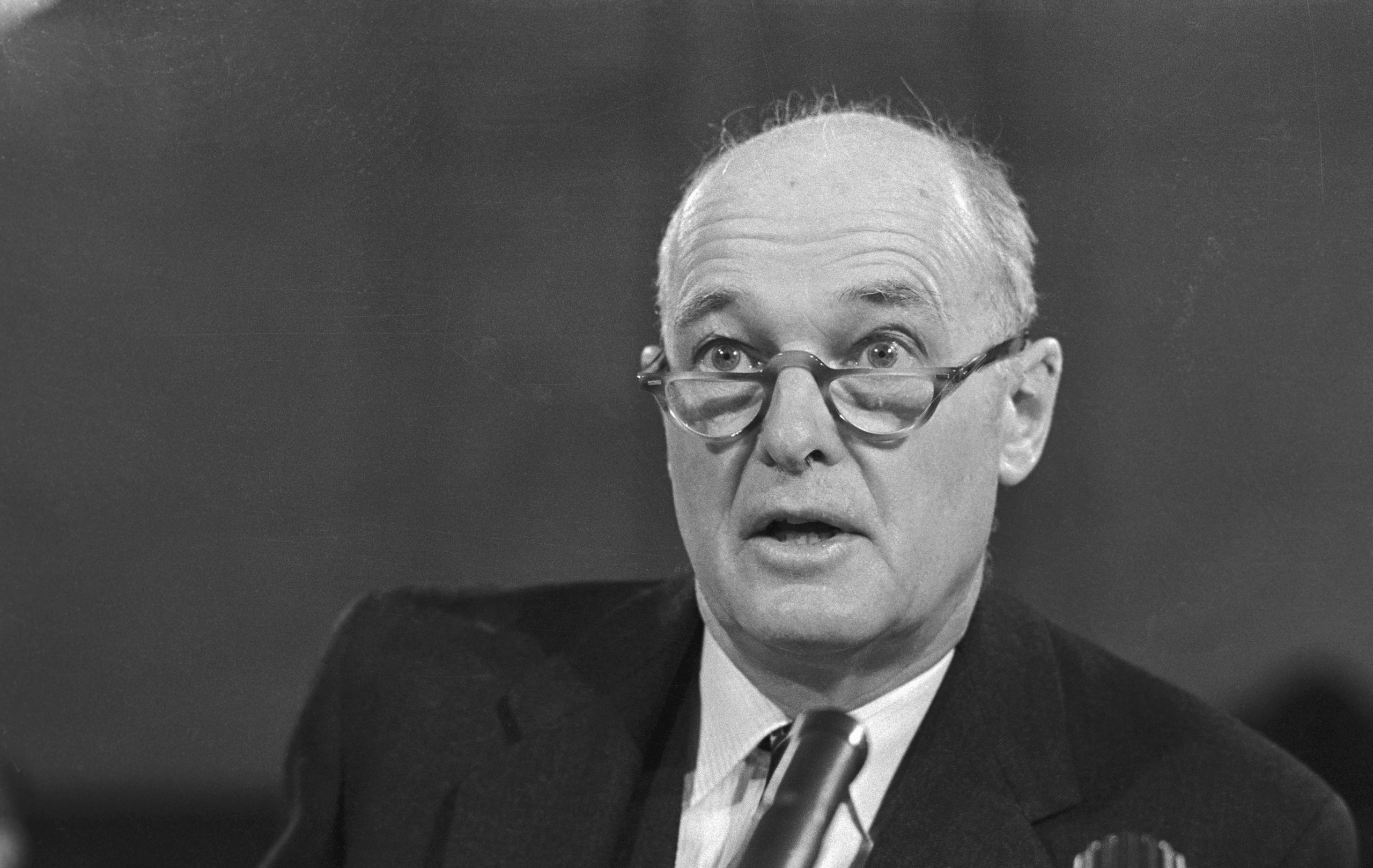The Kennan Canon, Vermont Edition
Kennan’s final, and most engagingly radical, enthusiasm? Independence for the state of Vermont.

Almost alone among the so-called Wise Men of the U.S. foreign policy establishment of the early Cold War years, George F. Kennan had the wisdom to imagine an alternative future to the perpetually warring empire into which the erstwhile republic transmogrified.
The author and reviser of Cold War containment policy was also, as Frank Costigliola’s absorbing new biography makes clear, a horndog par excellence. Upon turning 70, Kennan complained, “I wish they wouldn’t let female dental assistants wear such seductive clothes.”
Why, George: did you find them toothsome?
Over his 101 years on this side of the grave, George Kennan managed to be brilliant, prescient, outrageously snobbish, and often unlikable. He didn’t much care for blacks, Jews, working-class whites, or Hispanics, though he made individual exceptions. I expect he would not have driven the welcome wagon to greet certain of my ancestors.
Kennan was almost criminally neglectful of his children and a philanderer withal. He and his Norwegian wife, apparently a dull virago, mistreated the servants the cosseted Kennans kept. Yet for all this, his trenchant and even impassioned warnings about “the hubris of inordinate size” are among the most sagacious passages ever committed to paper by an American mandarin.
Costigliola notes Kennan’s lifelong preference for “personal rather than anonymous or machine interactions, local sourcing, small farms, other small enterprises, backyard ventures, environmental cleanup, crafting and building things, hand tools, small-scale everything, trains rather than planes and cars, and the arts and technologies lost with the hegemony of the internal combustion engine.”
But he ignores Kennan’s final, and most engagingly radical, enthusiasm: independence for the state of Vermont.
In Kennan’s valedictory, Around the Cragged Hill (1993), he had come out as a full-fledged decentralist, musing that the hypertrophied United States should fission into “a dozen constituent republics” to which most of Washington’s current responsibilities would devolve. In this way, we might resist giantism, uniformity, and depersonalizing bureaucracy while reinvigorating the regions that are America’s heart and soul.
No one in authority listened to him. He was not speaking their amoral language of power.
A decade later, as his age approached three digits, Kennan fell into a fascinating correspondence with Thomas Naylor, the Duke economist who in his Green Mountain retirement had founded the Second Vermont Republic (SVR).
Working to “extricate Vermont peacefully from the United States as soon as possible,” the SVR pursued its roots-radical course with a beguiling mixture of whimsy and dead seriousness, with parades and puppet shows and readable position papers.
Arguing that the United States had grown too big, too powerful, too undemocratic, and too unresponsive to the needs of citizens and small communities, the SVR attracted unexpected support from two ancient eminences: liberal lion John Kenneth Galbraith and George F. Kennan, from whom Naylor received ten secession-themed letters between February 2001 and February 2003.
Secession, said Kennan, “interests me greatly at this final stage in my life, and I have a few thoughts about it that I would like to see put into written form before it becomes too late.”
He insisted that independence for the three northern New England states (Maine, Vermont, New Hampshire), whether separately or in union, was not “fanciful” but a goal “towards the realization of which the efforts of enlightened people might…be usefully directed.”
“Such are at present the dominating trends in the U.S. that I can see no other means of ultimate preservation of cultural and societal values that will be not only endangered but eventually destroyed in an endlessly prolonged association of the northern parts of New England with the remainder of what is now the U.S.A.”
Unlike the intensely democratic populist SVR, Kennan was frankly elitist. Before his ascension to Wise Manhood, he had distrusted democracy and even toyed with the idea of benevolent despotism. But physical infirmity brought clarity. He saw the beauty of the Little America as contrasted with the ugliness of the imperial power.
Subscribe Today
Get daily emails in your inbox
Kennan died. Thomas Naylor died. The window through which dissentient thoughts escaped into America was slammed shut. But the dream of an independent Vermont lives on. Rob Williams—Champlain College professor, breathwork trainer, and food-truck vendor of grass fed yak meat at farm markets—tends the flame today with smarts and energy.
The SVR’s public presence has faded over the last dozen years. Williams tells me that Vermont decentralists got stuck between “the nationalist rock of Trump and the globalist hard place of Clinton, Obama, and Biden.” But you can’t kill the human longing for the human scale.
As George Kennan, the only Wise Man who actually placed American interests first, wrote Thomas Naylor on May Day 2002, when the ominous tattoo of Bush-Cheney war drums resounded throughout the land: “All power to Vermont in its effort to distinguish itself from the U.S.A. as a whole, and pursue in its own way the cultivation of its own tradition.”